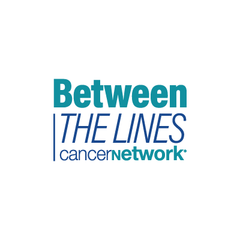
IRD vs Rd in Routine Clinical Practice: Response Outcomes
Suzanne Fanning, DO, and Joshua Richter, MD discuss efficacy outcomes seen in a routine clinical practice study of ixazomib, lenalidomide and dexamethasone [IRD] compared with lenalidomide and dexamethasone [Rd] in patients with relapsed/refractory multiple myeloma.
Episodes in this series

Suzanne Fanning, DO: In terms of maximal response, when we look at the IRD [ixazomib, lenalidomide, dexamethasone] arm compared to the doublet Rd [lenalidomide, dexamethasone] arm, we can see that there is a trend toward significance with regard to stringent complete response. We can see specifically with regard to CRs [complete responses], VGPRs [very good partial responses], we can see the values between the triplet and the doublet listed here. We also see that there’s significance in terms of those patients who achieved VGPRs, not however, with regard to overall response rate.
Joshua Richter, MD: For those of you listening who are not myeloma geeks like myself and Dr Fanning, to put it into context, a VGPR or better is a 90% or greater reduction in your paraprotein; overall response is PR [partial response] or better, 50% reduction or more; and CBR, or clinical benefit rate, is MR [minor response] or greater, so a 25% reduction in paraprotein or greater. The take-home here is that the general responses in terms of overall response rates and clinical benefit rate were not much different. However, we did see deeper responses, like high rates of VGPR, in the triplet, and we know that at every place along the line in myeloma, from up front to early relapse to later relapse, the deeper responses correlate to more durable responses.
Suzanne Fanning, DO: In terms of progression-free survival [PFS] from treatment initiation, we can see here, first on the left side of the screen, we see all patients. To the right, we see patients in relapses 1 to 3. When we look at the triplet in orange compared to the doublet in green, we can see the improvement in both of these Kaplan-Meier curves. We see that those patients with 1 to 3 prior lines of therapy fare better when we compare all-comers within the trial.
Joshua Richter, MD: I think this is crucial because, I know when I take a look at the NCCN [National Comprehensive Cancer Network] guidelines, it’s just a giant list of alphabetical regimens, and it’s kind of hard to know which one to use early, late, and things like that. Studies like this help to put into context that if you’ve had success or you like all oral option of IRD, it’s probably better suited as a 1 to 3 prior line regimen than that later 4, 5, 6-plus line of regimen.
Now of course, we’re always trying to get that brass ring of overall survival. Here we see our overall survival curves comparing IRD versus Rd. At least in this study, it did show statistically significant improvements in overall survival, both in the all-comers and in the 1 to 3 prior lines of therapy. Now, this is something that didn’t necessarily hold up in some of the other TOURMALINE studies, with IRD versus Rd in the upfront setting, for example. Although it did show an improvement in progression-free survival of over a year improvement, the hazard ratio and P value were such that it was not statistically significant. This is kind of the first inkling of an overall survival benefit of this triplet in the relapsed setting. I think it is very interesting to see how there are differences between the clinical trial world and the day-to-day world where we’re all treating patients.
Suzanne Fanning, DO: I would add to that, that in most of our data we’re used to seeing PFS as the primary end point because this is an incurable malignancy. It’s not that often that we have overall survival information to guide us, so I find it very reassuring and definitely encouraging for patients.
Joshua Richter, MD: I couldn’t agree more.
Transcript edited for clarity.
Newsletter
Stay up to date on recent advances in the multidisciplinary approach to cancer.














































































